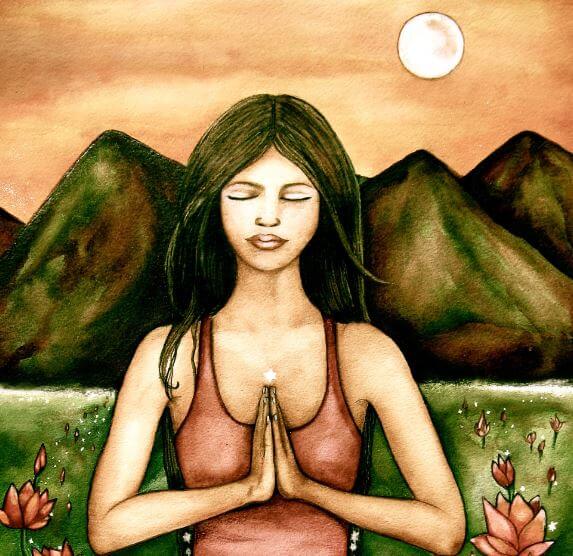Mindfulness: The Heart of Buddhist Meditation

Jon Kabat-Zinn and other experts have said that mindfulness is the heart of Buddhist meditation because of its relationship to Zen meditation and Vipassana. These are both representative of the philosophical doctrine of the here and now.
When we talk about mindfulness we can understand it both as a meditation technique as well as a state of full attention to what surrounds us and the events that are occurring.
It is considered, therefore, that through mindfulness we carry out a process of observation that does not judge and helps us to be aware of what surrounds us on the outside and what we feel internally.

The relationship between mindfulness meditation and Vipassana
Although there are other Buddhist traditions such as Mahayana and Vajrayana, mindfulness is considered the cornerstone of Theravada Buddhism, which was spread by the Buddha, Gautama Siddhartha, in South and Southeast Asia.
One of the principle techniques of Theravada Buddhist meditation is Vipassana, which is essential to achieving nirvana. To understand this better we can go to the translation of the word “Vipassana” which refers to the experience of “seeing things as they are, not as they seem.”
This meditation is described in the following steps:
- The person agrees not to kill, not to steal, not to perform sexual misconduct, not to lie, not to take toxic substances, not to disturb the peace of others, etc. It is in this way that they aim to achieve enough serenity to continue.
- The second step that must be learned is to control the mind by concentrating on the same object by clearly registering everything thing that happens to it. Breath, mental objects, feelings can all be used as objects… It is about being impartial and unbiased to the events.
- As a third step, the development of insight of one’s own nature is described. This would be the culmination of the teachings of the Buddha: self-purification through self-observation.

Zen meditation and mindfulness
As we already pointed out, mindfulness also draws on practices from Zen meditation, which focus on breathing and body positions (walking, sitting and lying). In addition, Kabat-Zinn says, with reference to this type of meditation, the fundamental elements mindfulness are as follows:
- Do not judge: abandon the habit of categorizing our experiences as good or bad.
- Be patient: being able to respect the natural processes of events and being open to every moment because things are discovered when it is time.
- Maintain a beginner’s mind: we must remain free from expectations based on our previous experiences.
- Have confidence, take responsibility for ourselves and learn to listen to our own being, and to have confidence in it.
- Do not exert yourself: we must abandon the effort to achieve results. The regular practice of mindfulness itself produces results.
- Accept yourself: we see that things are as they are in the present. This implies that we must accept ourselves even though at first the very intensity of the emotional process makes us deny ourselves and get angry with it. This is not synonymous with a passive attitude but rather the will to see things as they are.
 Mindfulness, a 3rd wave therapy
Mindfulness, a 3rd wave therapy
Mindfulness is seen as central to numerous therapies called third wave. They are aimed at cultivating a broader and more flexible outlook towards one’s own emotional experiences, so that we can achieve a sense of well-being that inevitably coexists with that which is painful.
Consciousness that is achieved from this practice proves to be a universal human capacity which, often becomes invisible in our daily life.
Therefore, in essence mindfulness is an end in itself, a way to live fully conscious. Reaching full consciousness is something that requires great effort when changing bad habits such as distraction or avoidance, so it requires practice to master this technique and come to this state.
Often we do not perceive the sensations that occur in ourselves. We care about the future and continue mulling over the past, which prevents us from paying attention to what really matters, the here and now, a state of consciousness that we get through mindfulness .
Images courtesy of Claudia Tremblay
This text is provided for informational purposes only and does not replace consultation with a professional. If in doubt, consult your specialist.








